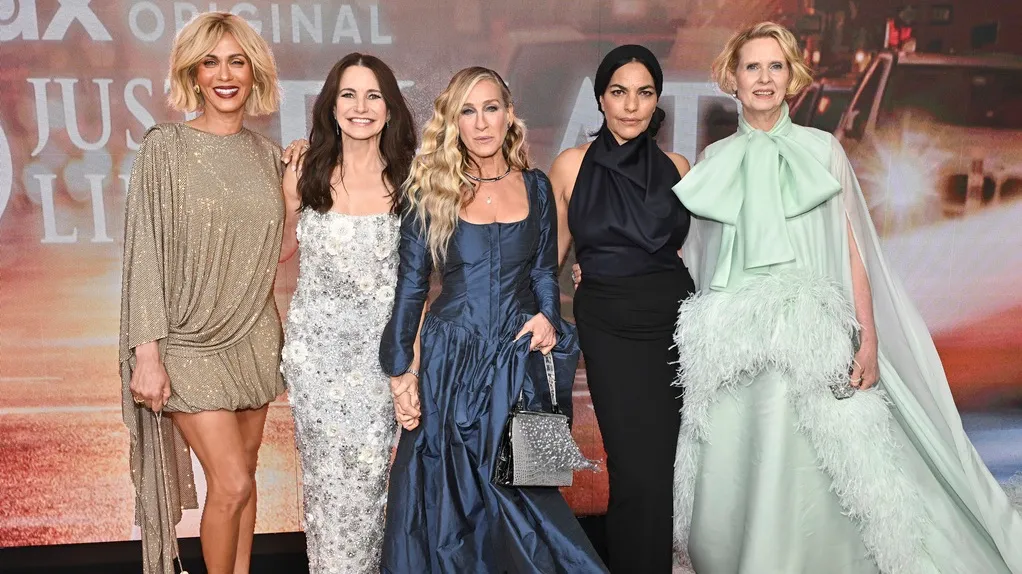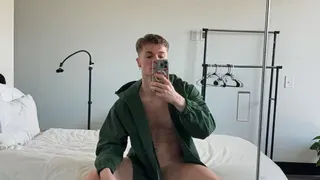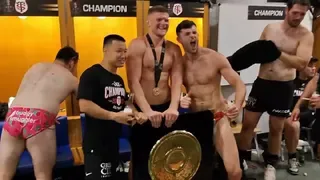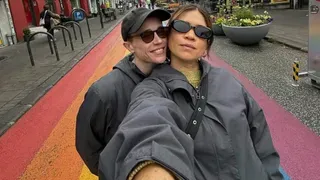September 18, 2011
Lesbians Seeing Lesbians at Leslie/Lohman Museum
Winnie McCroy READ TIME: 6 MIN.
To paraphrase a common expression, distance makes the heart grow fonder. Perhaps this why the '70s-era photographs currently on display at Leslie/Lohman Museum of Gay and Lesbian Art's exhibit, "Lesbians Seeing Lesbians: Building Community in Early Feminist Photography" evoke such a palpable sense of joy.
The exhibit primarily features silver gelatin prints by renowned lesbian photographers Joan E. Biren (JEB), Cathy Cade, Catherine Opie, and Tee A. Corinne. Pictures of vaginas figure prominently: pen and ink vaginas, Corinne's "Isis" series of vaginas melded into landscapes, and lots and lots of bushy, '70s-era vaginas.
But the exhibit is also flush with photographs of lesbians: lesbians with mullets, smoking on steps; lesbians fixing cars, lifting weights, and doing karate; lesbians marching arm in arm; pregnant lesbians, hugging; black lesbians, kissing; naked lesbians, standing in campgrounds, cabins, or behind their cameras; and of course, lesbian softball teams.
These images, shot back when the concept of "lesbian" was just beginning to emerge as a political identity, capture the cultural zeitgeist of the times.
Fix cars? Do photography
On September 15, artists Cade and JEB joined curators Ilana Eloit and Jonathan D. Katz to discuss the '70s women's liberation movement from which these photos emerged.
Cade's interest in photography was spurred first by her move to attend historically African-American Spellman College in 1962, and later, by time spent in New Orleans during the women's liberation movement.
"I thought, if these women can fix cars and do plumbing, I can do photography," said Cade. At the time, women were not believed to be technologically capable of being photographers. Ironically, these photos helped challenge the idea of male dominance and supremacy.
JEB got her start through student uprisings at Mt. Holyoke College in Massachusetts, the gay civil rights movement, and protesting the Vietnam War.
"I tried to be straight, but I always knew I was a lesbian," said JEB, admitting she was, "one of a long line of closeted lesbians at a women's college. You knew who the other lesbians were by the giggling and four feet in the shower stalls... I was young and in love, and terribly romantic, but it was horrible to be in the closet."
Cade said that she dated men in college, but "was not willing to be dumb." She recalled attended weekly women's liberation meetings, where straight women entered quietly, one by one, and took their seats. Twenty minutes later, a group of eight or ten lesbians would stroll in, noisily.
"They always looked like they were having so much fun," said Cade. "The possibility of coming out was there, but I couldn't imagine kissing a woman."
She worked out the details, however, and during what was the last protest march against the Vietnam War, ended up with the gay contingent. She marched with the group seen in her photo, "Gay is Good," walked through Golden Gate Park with the woman she was staying with, went back to her place, and made love. The next day, she excitedly told all her flat mates that she was a lesbian.
There was a sense at the time of lesbianism as a political statement against patriarchy, but these "theoretical lesbians" didn't last long, said Cade. Author Ti-Grace Atkinson wrote, "Feminism is the theory, lesbianism is the practice," and for women-identified-women, the idea that women could have a voice and a space apart from men was novel.
This, combined with the other revolutions of the times, lead some women to seek a purely female space. JEB was among those lesbian separatists who found "a lesbian feminist collective, a small, radical, avant-garde group in the revolution."
A small lesbian minority
JEB's time with the separatists was limited, although she avers, "It was important to me and the movement to have a time and place away from what had damaged us. There was an anti-male supremacy movement that was about lesbians having power apart from men. This was a way of trying to escape and rethink without patriarchal influences."
Only a small minority of women were lesbian separatists, although many, including Cade, limited her connections with men to unlearn the internalized sexism of deferring to them. While Cade was not a separatist, she too said that, "the change that women went through included the ideas that women could be lesbians, and that lesbians could be mothers. There were huge changes, and the idea that women could do anything."
The movement may have been small, but the reverberations can still be felt. They helped create awareness about male domination that had allowed male violence, rape, domestic abuse, and incest to stay hidden.
"It was one of the changes we made, so that now we can talk about male violence and know it is real," said JEB.
And although JEB says her politics have not mellowed over time, she did feel that "so many things we hoped we would have achieved as part of our utopian vision are further away today than they were then. They are ways that people can keep from feeling alone that were unimaginable then. Now we are represented in the media, but it is not authentic enough. It is way too white, middle-class, and young, and leaves out too many of us."
Neither Cade nor JEB originally thought of themselves as artists, although they both noted that their late friend Corinne always held that perspective, and encouraged them to think bigger. The role of photography in enacting these changes was not lost on them; they felt the impact of photographs like the little girl running from napalm, of Martin Luther King, Jr., and the stark imagery of Dorothea Lange.
But when it came to documenting the gay community, JEB said, "In the real world, you can't build a movement in the closet, of people who can't see each other. We can't make political change with people who are invisible. It was my life's work to...make people visible to each other, and to encourage them to be brave enough to come out."
At the time, gays could lose their jobs, homes, and families by coming out. So JEB started by talking with women until they were comfortable enough to move in front of the camera. Their bravery made it easier for others to get in front of the camera.
Said Cade, "It was a way to contribute to the movement without going to so many damned meetings."
At the time, the women's liberation movement had distanced itself from the "lavender menace" of lesbianism, which created some tension. While feminism was a political identity, lesbianism was not. Said JEB, "Although I knew I was a lesbian from the time I was a little girl, The Furies were writing that any woman could be a lesbian. I went along with it, but I didn't believe it. Some women went along with it, but it didn't work -- although I think they enjoyed trying."
Lesbianism included sexuality -- and the '70s were a very sexual time. "People have the idea of humorless, sexless feminists... but that is a myth, trust me on this one," said JEB. "You can't talk about lesbianism without talking about sexuality. For me as a lesbian, I can separate those things in my mind, but not in my being."
The nexus of years spent working in the civil rights and women's lib movements lead Cade and JEB to become women-identified-women, which prompted them to pick up a camera, primarily as a way to find an artistic expression outside of the male hegemony that ruled verbal communication.
When these women photographed themselves and other lesbians, they created not only a record of the LGBT movement, but formed a utopia with their earnest, intentional way of living.
Those halcyon days are gone, but their effects are long lasting. Girls grow up hearing that they can do anything boys can do. The wealth of shows like "Law & Order: SVU" show that male violence is no longer swept under the carpet. And gays and lesbians across the world realize that they are not alone, that their reality is part of a larger movement, and that they are members of an incredibly diverse, wide-reaching community.
Lesbians Seeing Lesbians: Building Community in Early Feminist Photography runs through October 22 at the Leslie/Lohman Museum of Gay and Lesbian Art, 26 Wooster St. For info call 212-431-2609 or visit http://www.leslielohman.org/index.html
Winnie McCroy is the Women on the EDGE Editor, HIV/Health Editor, and Assistant Entertainment Editor for EDGE Media Network, handling all women's news, HIV health stories and theater reviews throughout the U.S. She has contributed to other publications, including The Village Voice, Gay City News, Chelsea Now and The Advocate, and lives in Brooklyn, New York.





